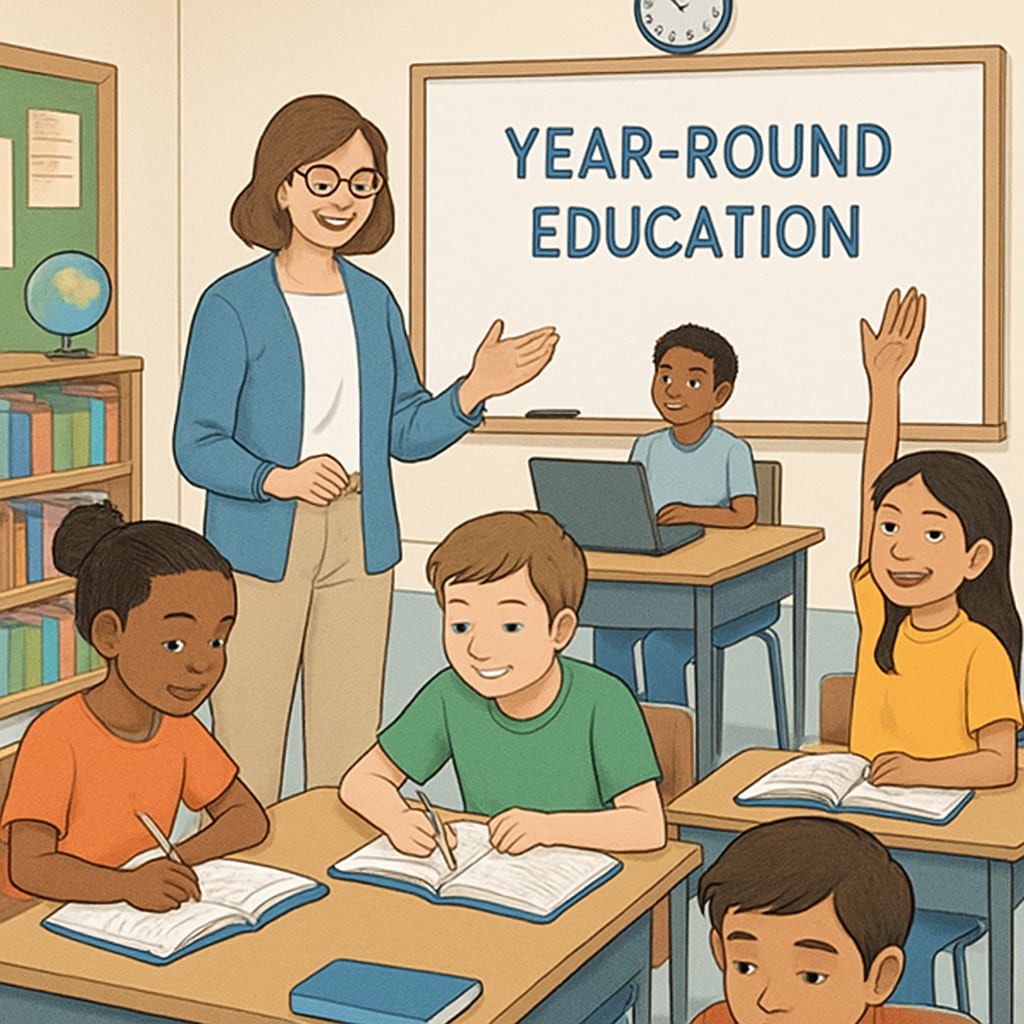The concept of year-round education has emerged as a potential solution to enhance knowledge retention and promote learning continuity among students. Traditional school calendars, with extended summer breaks, often lead to what is commonly known as the “summer slide”—a phenomenon where students lose a significant portion of the knowledge they acquired during the school year. This article explores the benefits of year-round education and introduces a potential alternative model: alternating one week of learning with one week of rest.
What is Year-Round Education?
Year-round education involves breaking the conventional school calendar into shorter, more frequent learning and vacation periods. Unlike the traditional system, which typically consists of nine consecutive months of schooling followed by a long summer break, year-round education redistributes vacation time throughout the year. This approach can take various forms, such as a 45-15 schedule (45 days of study followed by 15 days off) or other similar patterns.

The Problem with Long Summer Breaks
Research has consistently shown that extended summer breaks can negatively impact student learning. According to a study on summer learning loss, students may lose up to two months’ worth of math skills and reading comprehension during summer vacations. Teachers often spend a significant portion of the new school year reviewing past material to compensate for this loss.
As a result, the traditional school calendar may inadvertently hinder overall academic progress. Year-round education aims to address this issue by maintaining a more consistent learning schedule, thereby reducing the likelihood of “summer slide” and improving long-term knowledge retention.
Potential Benefits of Year-Round Education
There are several benefits associated with year-round education:
- Improved Knowledge Retention: Shorter breaks help students retain information better and reduce the need for extensive review.
- Consistent Learning Pace: Alternating study and rest periods keep students engaged without overwhelming them.
- Flexible Scheduling: Parents find it easier to plan vacations and childcare with distributed breaks.
- Reduced Teacher Burnout: Teachers benefit from frequent breaks, which can improve teaching quality.

Exploring an Alternative Model: One Week On, One Week Off
One innovative approach to year-round education is the “one week on, one week off” model. This alternating schedule offers several potential advantages:
- Consistent Engagement: Students experience regular cycles of learning and rest, preventing burnout and maintaining interest.
- Enhanced Retention: Frequent breaks prevent the accumulation of exhaustion while allowing time for reflection and consolidation of learning.
- Family Time: Families have predictable schedules for bonding and activities, fostering a healthier work-life balance.
While this model may not suit every school or demographic, it demonstrates the flexibility of year-round education in addressing various needs and challenges. For instance, schools in warmer climates or urban areas may find this approach particularly beneficial.
Challenges to Implementation
Despite its advantages, transitioning to a year-round education model is not without challenges. Some of the key obstacles include:
- Resistance to Change: Parents and educators accustomed to traditional calendars may be hesitant to adopt new systems.
- Logistical Issues: Adjusting school facilities, transportation, and extracurricular activities to fit a new schedule can be complex.
- Regional Variations: Different communities may have unique requirements, necessitating tailored solutions.
Nevertheless, with proper planning and collaboration among stakeholders, these challenges can be addressed effectively.
Conclusion: Is Year-Round Education the Future?
Year-round education offers a promising solution to the problems posed by traditional school calendars, particularly in terms of knowledge retention and learning continuity. By redistributing breaks throughout the year, students can maintain a consistent pace of learning, avoid the “summer slide,” and ultimately achieve better academic outcomes.
Adopting innovative models, such as alternating learning and rest weeks, further highlights the flexibility and potential of this approach. As schools and communities explore these options, year-round education could very well be the key to fostering more effective and sustainable learning experiences for future generations.
For more information on the impact of year-round education, visit Education on Britannica.


